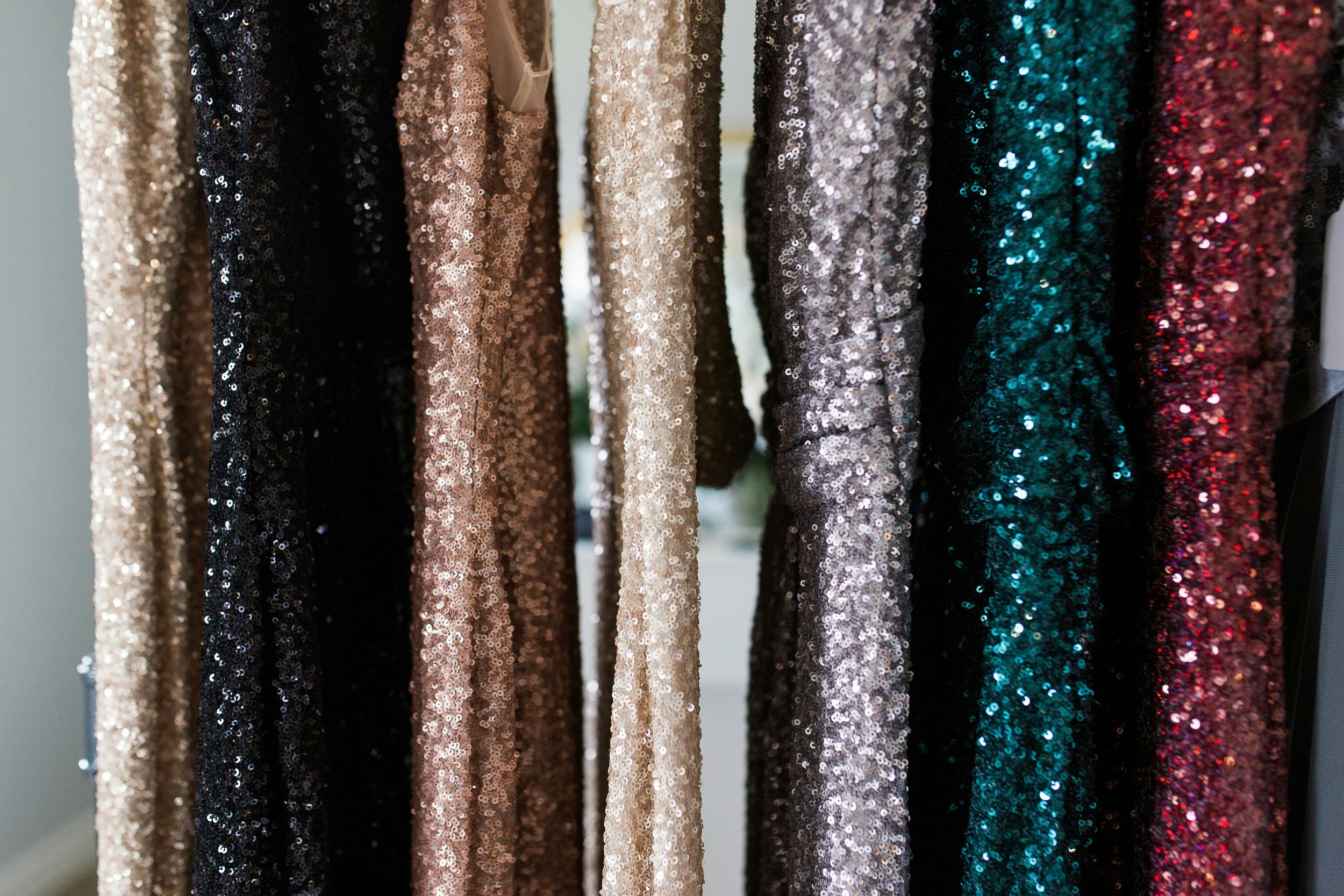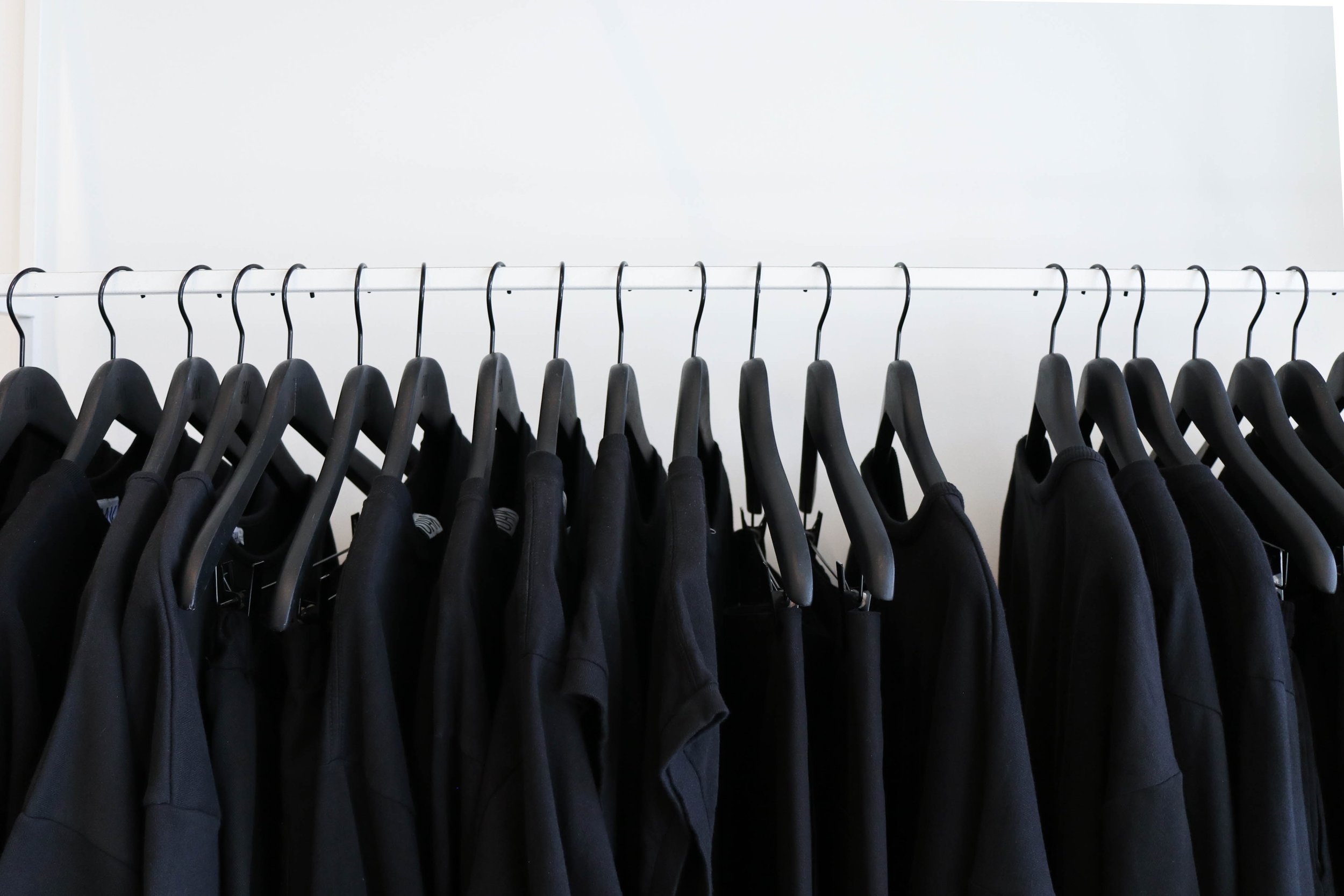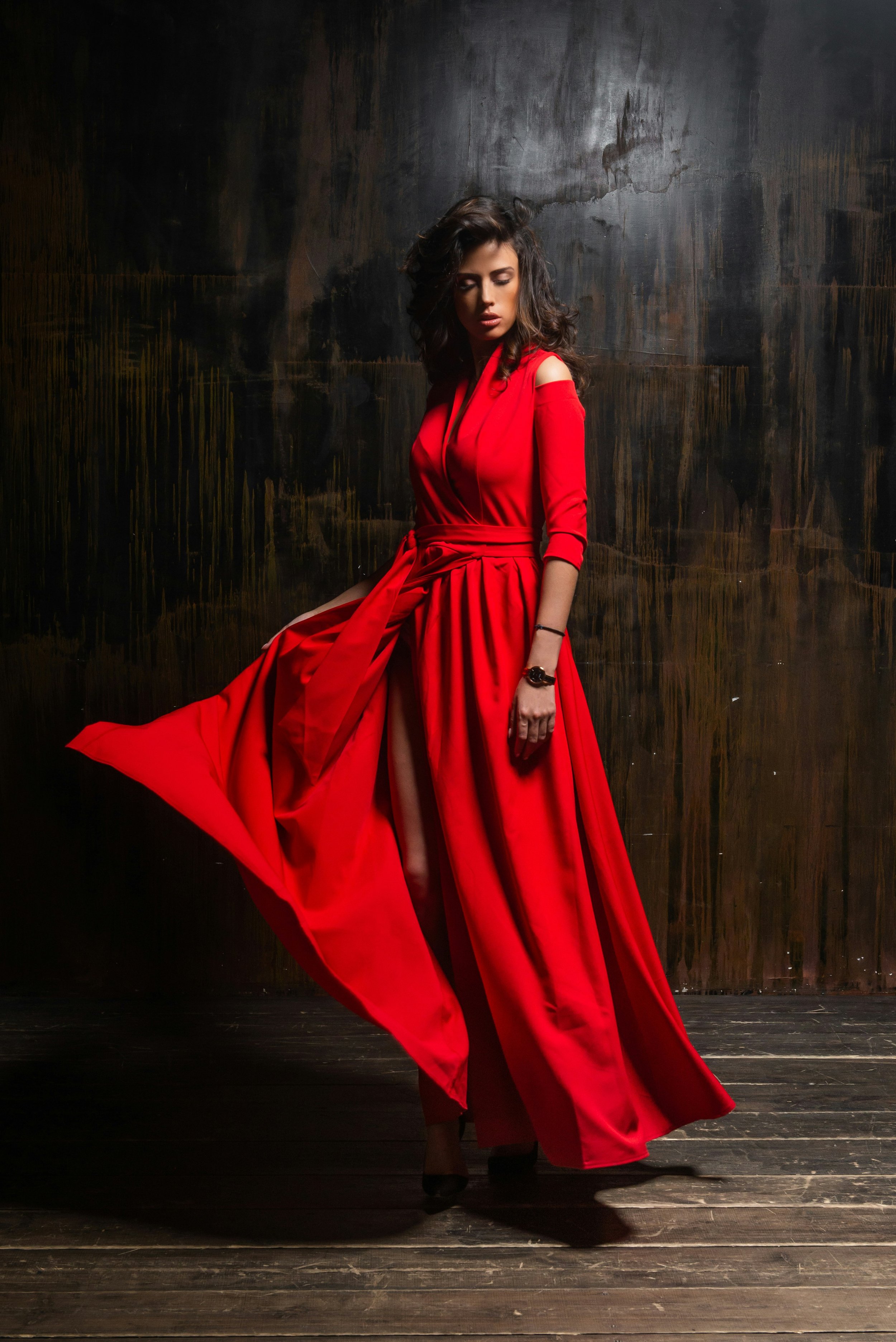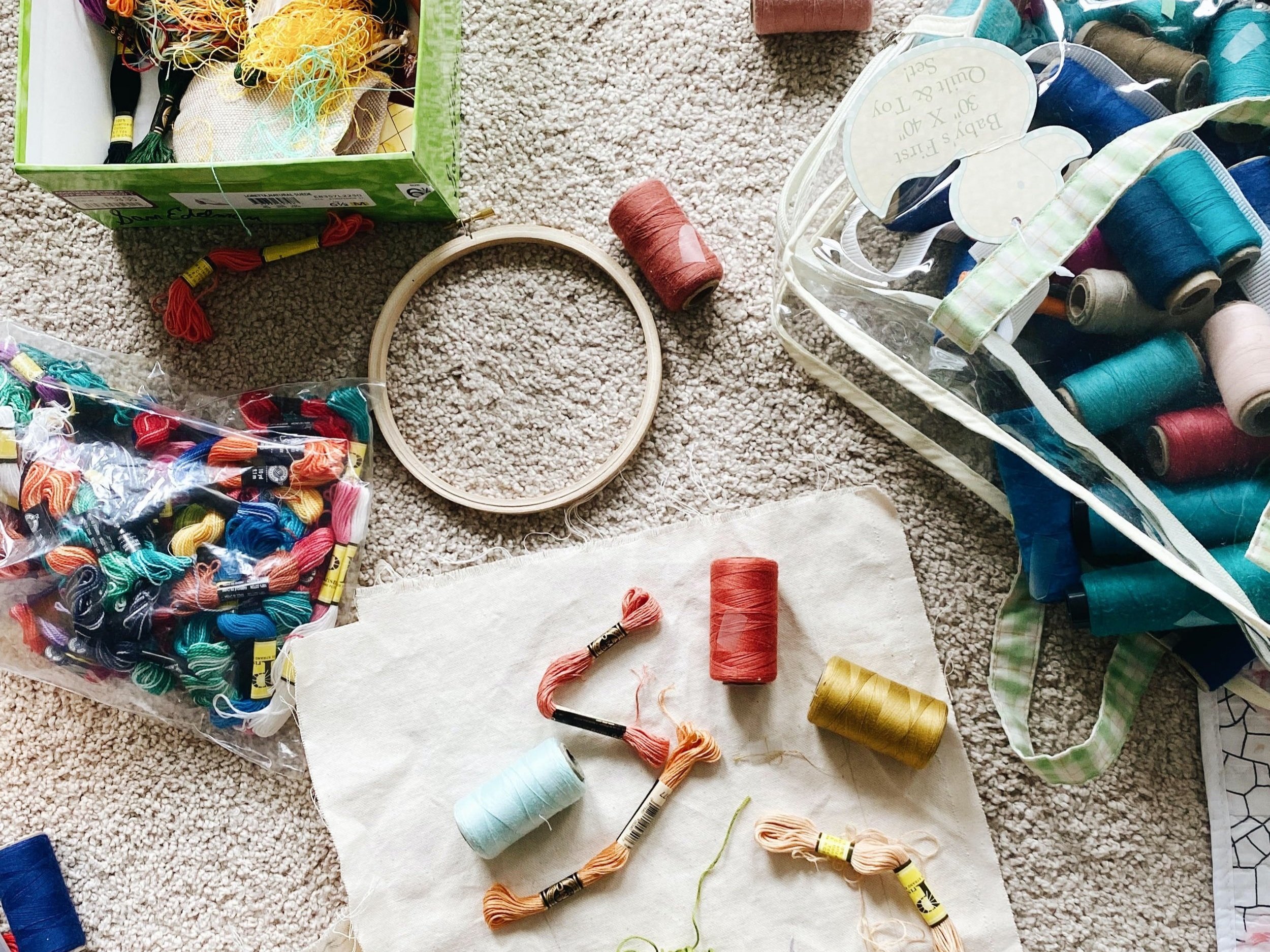How to Put Together a Sustainable Holiday Wardrobe
Creating a sustainable holiday wardrobe is an excellent way to embrace your travel adventures while being mindful of the environment. As you prepare for your getaway, consider these tips to build a stylish, functional, and eco-friendly wardrobe that aligns with your values.
Photo by Marissa Grootes on Unsplash
1.Decide what you need
Think about what the weather will be like and what you’ll do on your holiday. If you have a clear focus when you shop, you won’t be tempted by things that won’t get used. Don’t bother buying dressy clothes if you’re on an action holiday or planning to spend most of your time on the beach.
Photo by engin akyurt on Unsplash
2. Evaluate Your Current Wardrobe
Before you start shopping for new pieces, take a moment to assess what you already have. Go through your closet and identify versatile items that can be mixed and matched for your holiday. This not only saves money but also minimises the need for new purchases. You might discover forgotten favourites that are perfect for your trip.
Photo by Julia Kicova on Unsplash
3. Focus on Versatility
When selecting new clothing for your h, prioritise versatile pieces that can be worn in multiple ways. Choose items that can be dressed up or down, such as a simple dress that can be paired with sandals for a casual day or dressed up with accessories for an evening out. This approach reduces the number of items you need to pack and helps lighten your luggage.
Photo by Vanessa Serpas on Unsplash
4. Opt for Sustainable Fabrics
Look for clothing made from sustainable materials such as organic cotton, hemp, Tencel, or recycled fabrics. These materials are often more environmentally friendly and can provide comfort during your travels. Brands that focus on sustainability often share information about their sourcing and manufacturing processes, allowing you to make informed choices.
5. Shop Second-Hand or Rent
Consider shopping at thrift stores or using online resale platforms to find unique holiday pieces. Second-hand shopping not only reduces waste but also allows you to find one-of-a-kind items that add character to your wardrobe. Alternatively, for special occasions or specific needs, consider renting clothing instead of buying. Rental services offer a wide range of options without the commitment of ownership.
Photo by Koen Sweers on Unsplash
6. Pack Smart Accessories
Accessories can elevate your holiday outfits without requiring a complete wardrobe overhaul. Choose a few key accessories that can complement multiple outfits, such as a versatile scarf, a stylish hat, or a pair of statement earrings. Consider borrowing or swapping accessories with friends to keep your look fresh while minimising consumption.
Photo by LUDDMYLA on Unsplash
7. Layer for Comfort and Style
Traveling often involves varying climates and activities, so layering is essential. Opt for lightweight layers that can be easily added or removed. A lightweight jacket, cardigan, or wrap can provide warmth during cooler evenings or air-conditioned spaces. Layering not only enhances comfort but also allows for a variety of looks with fewer pieces.
Photo by Vladimir Fedotov on Unsplash
8. Invest in classics
While it can be tempting to follow every fashion trend, focus on timeless pieces that reflect your personal style and can be worn beyond your holiday. Investing in classic items ensures that your wardrobe remains relevant and reduces the likelihood of needing replacements in the future.
Photo by Vladimir Fedotov on Unsplash
9. Care for Your Clothes
To ensure your sustainable holiday wardrobe lasts, practice good garment care. Follow washing and care instructions, avoid excessive washing, and store clothes properly. Taking care of your clothing not only extends its life but also promotes a more sustainable approach to fashion.
Photo by Erik Witsoe on Unsplash
Building a sustainable holiday wardrobe doesn’t have to be overwhelming. By evaluating your current wardrobe, choosing versatile and sustainable pieces, and practicing mindful consumption, you can create a stylish and eco-friendly collection that enhances your travel experience. Embrace your adventures while being kind to the planet, and enjoy your journey with confidence!
How to Create a Sustainable Festive Capsule Wardrobe
Party season is here and it can be easy to get tempted by shiny fast-fashion solutions to the question “what shall I wear?” At the other end of the spectrum, it can be frustrating to wear the same outfits over and over.
Photo by Khaled Ghareeb on Unsplash
But with a little time, a wardrobe audit and a few sustainable additions, you can easily pull together the clothing you need to help you look good and feel good on every occasion.
Photo by Adriano Gonçalves on Unsplash
Our How to Guide walks you through the process of curating a mini-capsule wardrobe and suggests some garments to include. Check out our other guides for more info on each step.
Photo by Khaled Ghareeb on Unsplash
1. Shop Your Wardrobe
Before shopping, check what you already own. Rediscover hidden gems, reimagine outfits, or revive past favourites with a fresh twist using accessories or layering
Photo by Adrienne Leonard on Unsplash
2. Borrow or Swap
Consider borrowing outfits from friends or family. Hosting a clothes swap party is a fun way to refresh your wardrobe while keeping it budget- and eco-friendly.
Photo by Marcus Loke on Unsplash
3. Rent for the Occasion
For statement pieces or one-off events, renting is a sustainable option. UK-based online platforms like Hurr, By Rotation, and My Wardrobe HQ offer stunning festive options without the commitment.
Photo by Caitlyn Wilson on Unsplash
4. Shop Second-hand
Visit charity shops, vintage boutiques, or online platforms like Depop, Vinted, or Oxfam Online. You’ll find unique, affordable pieces that reduce fashion waste.
Leeds City Centre shop Tråd Collective sells a fabulous range of second-hand and up-cycled clothing and accessories – as well as sustainable brands like ours!
Photo by Yunming Wang on Unsplash
5. Invest in Timeless Pieces
If buying new, choose versatile items made from sustainable materials. Look for brands with ethical practices like ZARAMIA AVA, People Tree, Thought Clothing, or Reformation. Prioritise quality over quantity.
Photo by Andrey Zvyagintsev on Unsplash
6. Accessorise Creatively
Transform simple outfits with bold accessories. Use jewellery, belts, or scarves to refresh your look. Supporting local artisans or small businesses adds an extra layer of sustainability.
7. DIY and Upcycle
Get crafty by customising older outfits. Add embellishments, tailor for a better fit, or combine pieces for something entirely new.
Photo by J Williams on Unsplash
8. Think Footwear and Bags
Opt for versatile shoes and bags that pair with multiple outfits. Secondhand shops or sustainable brands like Will’s Vegan Store, Vivaia or Bhava studio are great for finding ethical options.
Photo by Moreno Matković on Unsplash
9. Avoid Fast Fashion Trends
Stay true to your personal style. Trend-led purchases are often low-quality and wasteful. Instead, focus on timeless elegance or vintage charm.
Photo by Sanira Askerbekova on Unsplash
Here’s one take on the festive capsule wardrobe to get you started.
Check what you have in your wardrobe, substitute similar items and consider buying a few pieces from sustainable brands.
Photo by Yemi Wallington on Unsplash
1. The Little (Black) Dress
A classic LBD is endlessly versatile but why not break out and choose another neutral colour that you love. Opt for a style with clean lines, such as an A-line or wrap dress, made from sustainable materials like organic cotton, Tencel, or recycled polyester. Dress it up with statement accessories for formal events or layer it with a jumper for casual gatherings.
Photo by Anastasiya Badun on Unsplash
2. Stylish Trousers
Invest in high-quality trousers in a neutral tone like black, navy, or dark green. These can be paired with festive tops, cosy knits, or a jacket for an elegant yet comfortable look. Look for brands using deadstock or recycled fabrics.
Photo by Diego Nagem on Unsplash
3. Festive Top
Whether you like to make a statement with sequins or prefer something a little more subtle, a festive top can add sparkle to your capsule wardrobe. Choose an ethically made option in gold, silver, or jewel tones that complements your trousers or skirts. Rewear it with different bottoms to create unique looks.
Photo by hanen souhail on Unsplash
4. Midi Skirt
A flowing midi skirt in a luxe fabric like velvet, satin, or recycled polyester adds a touch of glamour. Opt for a neutral shade (black, champagne, or burgundy) or a bold print to make a statement. Pair it with a knit jumper for daytime or a sequined top for evening events.
5. Statement Outerwear
A bold coat or jacket is essential for staying warm and stylish. Choose a longline coat or a faux-fur cropped jacket made from recycled materials. A piece in a festive colour like deep red or forest green can double as a statement item.
Photo by oo verthing on Unsplash
6. Versatile Knitwear
A soft, neutral knit jumper in cream or grey is perfect for layering. Look for sustainable options made from organic cotton or recycled yarns or go second-hand. Layer it over dresses or pair it with trousers for casual gatherings.
7. Sustainable Shoes
• Block-Heel Ankle Boots: Great for outdoor events or when you’re on your feet for hours.
• Elegant Flats or Heels: A metallic or velvet pair can add a festive touch to any outfit.
• Sustainable Trainers: Perfect for casual parties or travel days. Brands like Veja or Allbirds offer stylish and eco-friendly options.
Photo by Klara Kulikova on Unsplash
8. Accessories
• Statement Jewellery: A pair of bold earrings or a chunky necklace can transform any outfit. Support local artisans or look for vintage pieces to keep it sustainable.
Photo by Oladimeji Odunsi on Unsplash
• Festive Clutch Bag: Opt for a recycled or upcycled design, or choose a versatile bag in metallic tones.
Photo by ONNE Beauty on Unsplash
• Belts: A chic belt can cinch a dress or add flair to your trousers or skirts.
Photo by Social Envy on Unsplash
Outfit Ideas with This Capsule:
1. LBD + Statement Jewellery + Heels: Classic evening look.
2. Midi Skirt + Knit Jumper + Ankle Boots: Cosy yet chic for a daytime event.
3. Stylish Trousers + Festive Top + Block-Heel Boots: Sophisticated yet comfortable.
4. Knit Jumper + Midi Skirt + Statement Earrings: Casual with a festive touch.
Photo by Andrey Zvyagintsev on Unsplash
How to Shop for Shoes Sustainably
Photo by Jaclyn Moy on Unsplash
Choosing the perfect pair of shoes is about more than just aesthetics. For the conscious consumer, it's essential to consider comfort, functionality, and sustainability. That means ethically produced, durable, eco-friendly footwear that looks good and feels good.
Our guide walks you through (excuse the pun) the options and includes tips on how to make your footwear last. For easy shopping, check out our guide at the end.
Everyday Shoes
Whether smart or casual, we all need a comfortable, everyday shoe to kick around in and there’s a wide range of vegan options.
Photo by Alex Quezada on Unsplash
• For lighter shoes, consider footwear made from recycled plastic, organic cotton and hemp.
• For an all-season, waterproof, breathable option, ground-breaking plant-based leather alternatives like Piñatex (pineapple leather) or apple leather are becoming more widely available. Piñatex scores very well on the environment and ethics and is the most durable compared with alternatives.
• If you want your shoes to last more than 3-4 years and your conscience allows, second-hand leather can be a good choice.
• To minimise the number of shoes you own, think about what you wear most of the time and choose a style and colour to complement it.
• Neutral tones tend to work best for maximum versatility.
Photo by Camila Damásio on Unsplash
Going Out
You don’t need to sacrifice style and elegance for sustainability. A growing number of sustainable brands are offering beautiful heels and flats to take you out partying.
Photo by Apostolos Vamvouras on Unsplash
• Look out for soft vegan leathers, organic natural fabrics, recycled polyester, cork and wood.
• If investing in an expensive pair, choose a timeless style that will work with many outfits.
• Check the fit carefully to make sure they’re comfortable.
Photo by Aleksandra Sapozhnikova on Unsplash
Boots
Boots are a winter staple, and the choice of style is huge. Here’s how to make sure they’re sustainable, and comfy too.
Photo by Arnel Hasanovic on Unsplash
• Look for recycled rubber, faux leather made from plant-based sources, and upcycled fabrics
• Avoid PVC which is not eco-friendly.
• Polyurethane is often touted as an animal-friendly alternative to leather but it’s neither sustainable nor biodegradable so steer clear.
• Opt for soles with good grip if you're navigating wet or icy streets and consider boots with thermal linings made from sustainable fabrics like organic cotton or bamboo.
• To keep you dry, many vegan boots come pre-treated with eco-friendly waterproofing agents, but if not, look for non-toxic sprays that won't harm the environment or compromise the boot's material.
Photo by The Nix Company on Unsplash
Trainers
Whether for serious running, or the gym, traditional trainers are something of an environmental disaster but the surge in demand for eco-friendly running shoes is driving innovation.
Photo by whereslugo on Unsplash
• Look out for trainers made from recycled polyester, bamboo, and sugar or algae foam.
• Some brands use recycled or biodegradable laces and linings.
• Brands like On Running now offer circular products which work via subscription. Return your old trainers for recycling every few months and receive a new pair.
Photo by erica steeves on Unsplash
Sustainably Caring for Your Footwear
Here are some eco-friendly tips to make your footwear last longer.
Photo by Anubhav Arora on Unsplash
1. Rotate Your Footwear
Switching between multiple pairs of shoes reduces wear giving each set time to rest, recover its shape, and air out.
2. Store Shoes Properly
• To keep the shape of your shoes and boots, use shoe trees made from sustainable materials like bamboo or stuff them with newspaper.
• Store sandals and trainers in an open space to prevent odour and keep them dry.
3. Clean with Eco-Friendly Products
• Vegan Shoes and Boots: Use a soft brush or cloth to remove dirt. For cleaning vegan leather, a mild soap with water works well, but avoid harsh chemicals.
• Condition plant-based leather with natural oils like olive or coconut oil to prevent cracking.
• Sandals: Cork and recycled rubber sandals can be wiped down with a damp cloth.
• Trainers: Clean your vegan trainers with a mixture of water and baking soda or use a sustainable fabric cleaner.
4. Waterproof with Non-Toxic Sprays
Vegan shoes can be waterproofed with eco-friendly, non-toxic sprays made from natural ingredients like beeswax alternatives or silicone-free formulas.
5. Repair, Don’t Replace
• Before binning a pair of shoes, check if they can be repaired.
• Replace insoles with hemp, cork or organic cotton versions
• Buy eco-friendly replacement laces
6. Avoid Excessive Heat
Avoid leaving your shoes in direct sunlight or using heat sources like radiators to dry them as this can warp footwear. Instead, stuff wet shoes with newspaper and allow them to dry at room temperature.
Photo by Pesce Huang on Unsplash
Shopping Guide
Here’s our pick of the vegan and sustainable shoes available in the UK.
Pre-loved Shopping second hand is sustainable and can snag you some incredible bargains but take care to look carefully before you take the plunge.
Whether shopping online or in person:
• Check for heavy wear to the insole (it should feel smooth and have no signs of sole collapse)
• Check wear to the sole: does it still have grips? Are there thin patches?
• Has the heel worn down evenly or is the wear all on one side?
• Check the upper for wear and holes.
• If shopping in person, try them on and check for comfort.
Vinted and Depop are two of the best online peer-to-peer services and there are many shop-front charity shops to choose from.
Photo by Klara Kulikova on Unsplash
Will’s Vegan Store is a UK-based shoe brand. Their offerings include ballet flats (carbon neutral, made of bio-oil based vegan leather) boots and biodegradable sneakers. They use recycled materials where they can’t find a natural option and have a ‘return to recycle’ scheme
https://wills-vegan-shoes.com/
Bhava studio – At the high end, Bhava have a wide range of vegan shoes including finely made boots, beautiful block and dainty kitten heels. They use, cork, wood and vegan leather.
Vivaia has a selection of heels and boots with uppers made from recycled plastic bottles.
Alohas offers a collection of vegan shoes including sleek boots and chunky loafers. Their new lines are released to pre-order at a discount of up to 30%
https://alohas.com/en-gb/collections/vegan-shoes
Nae is a vegan brand using AppleSkin, OEKO-TEX, Pinatex, cork and recycled PET to create their wide range of footwear for men and women. They have a pre-loved section that offers excellent condition used shoes at a fraction of the original price.
Reformation is a high-end brand with a large range of sustainable shoes and boots. Many are not vegan so filter by “recycled materials” to find their satin and dainty recycled polyester illusion mesh footwear.
Photo by Aleksandra Sapozhnikova on Unsplash
How to Layer Clothes the Sustainable Way
As autumn approaches, layering becomes an essential skill for coping with the changing temperatures and unpredictability of the season. By choosing eco-conscious and cruelty-free materials, you can stay warm and stylish while minimising your environmental impact. Here’s our guide on how to layer effectively using only vegan and sustainable materials.
Photo by Malicki M Beser on Unsplash
Choose a base layer
Your base layer should be comfortable and breathable. Organic cotton is a great sustainable choice—it’s soft, breathable, and grown without harmful pesticides or synthetic fertilisers. Or try bamboo fabric, which is not only soft and moisture-wicking but also grows quickly with minimal environmental impact.
For warmth, Tencel (lyocell) is a fantastic option. Made from sustainably sourced wood pulp, it’s soft against the skin, breathable, and biodegradable.
Photo by Charles Etoroma on Unsplash
For a stylish look, go for fitted long-sleeve tops or lightweight turtlenecks in these materials, to keep you warm while allowing your skin to breathe.
Photo by Pouya Hajiebrahimi on Unsplash
Add warmth with a cosy middle layer
The middle layer is where you add warmth, and there are plenty of vegan and sustainable options to choose from. Recycled polyester fleece is an excellent alternative to traditional wool or down. It provides great insulation, is lightweight, and often made from recycled plastic bottles, giving waste a new life.
Photo by mojtaba mosayebzadeh on Unsplash
For a more natural option, hemp is a sustainable fabric that’s perfect for autumn. It’s strong, breathable, and becomes softer with each wash. Hemp sweaters or cardigans offer warmth without the environmental toll of conventional materials. Another great choice is organic cotton flannel, which is cozy, durable, and pairs well with other layers for a classic autumn look.
Photo by Nyana Stoica on Unsplash
Choose a versatile outer layer
Photo by Alexi Romano on Unsplash
Your outer layer should protect you from the elements while being kind to animals and the planet. Recycled polyester or nylon are great for outerwear, as they are durable, water-resistant, and can be made from post-consumer waste like discarded fishing nets or plastic bottles.
Look for brands that offer jackets made from these materials, especially those with removable linings, allowing you to adjust to varying temperatures.
Cork is another innovative material gaining popularity in sustainable fashion. It’s naturally water-resistant, lightweight, and renewable. Cork jackets or coats not only provide protection from wind and rain but also make a stylish, eco-friendly statement.
Piñatex, made from pineapple leaf fibers, is another vegan alternative to leather, offering durability and a unique texture for outerwear.
Accessorise ethically
Photo by hossein beygi on Unsplash
Accessories are the final touch to your layered look, and they can also be sustainable and vegan. Choose scarves made from organic cotton, bamboo, or recycled polyester. These materials are soft, warm, and have a lower environmental impact than conventional options.
Photo by Farhad Khodayari on Unsplash
For hats and gloves, consider options made from recycled or organic materials. Beanies made from recycled acrylic or organic cotton will keep your head warm without harming the planet. Gloves made from recycled materials are also a great choice, providing warmth while reducing waste.
Photo by Farhad Khodayari on Unsplash
Choose the right Shoes
When it comes to footwear, opt for vegan leather or shoes made from recycled materials. Vegan leather alternatives like those made from apple peels, mushroom leather, or Piñatex are sustainable, durable, and stylish.
Photo by Karsten Winegeart on Unsplash
Many brands now offer boots and trainers made from recycled rubber, polyester, or other sustainable materials, ensuring that your feet stay warm and dry without compromising on ethics.
Pair shoes with organic cotton or bamboo socks, which are both warm and breathable. These materials are also more sustainable than conventional cotton, as they require less water and fewer pesticides to produce.
Photo by alexandra avelar on Unsplash
Layering doesn’t mean compromising on your values. By choosing vegan and sustainable materials, you can stay warm, stylish, and eco-conscious all season long. From organic cotton base layers to recycled polyester outerwear, there are plenty of options that allow you to enjoy the beauty of autumn while caring for the planet. So, as you prepare for the cooler months ahead, consider the impact of your wardrobe choices and embrace the art of sustainable layering.
Photo by Edward Howell on Unsplash
Shopping Guide
As always, there’s treasure to be found in charity shops and peer-to-peer platforms like Depop and Vinted.
Here’s our pick of retailers of sustainable vegan clothing, shoes and accessories
Earth Wardrobe offer very affordable basics like base layers, cosy long-sleeved Tencel sweaters, fleeces, leggings and hoodies. https://earthwardrobe.com
Goose Studios specialise in affordable organic cotton tees, sweatshirts and hoodies https://goosestudios.co.uk/
Rapanui are a great brand for sustainable knitwear and outdoorsy jackets https://rapanuiclothing.com/
Mother of Pearl has a large range of beautiful and unusual coats and jackets https://motherofpearl.co.uk/collections/jackets-coats-sustainable-fashion
Will’s Vegan Shoes make and sell everything from Mary Janes to chunky boots. Check out their gorgeous bags and belts too https://wills-vegan-shoes.com/
BEEN London offer bags and wallets in recycled leather as well as vegan materials like Piñatex leather and AppleSkin™
How to Rent Clothing
Photo by naeim jafari on Unsplash
Fashion rental has become increasingly popular in recent years. Not only does it reduce waste and save money but it makes designer apparel much more affordable and accessible. If you’re wondering whether it’s for you, read on!
Photo by No Revisions on Unsplash
Fashion rental is really just that; instead of buying garments, shoppers can pay a fee to rent and wear clothing, shoes or accessories for a few days or up to a few weeks. This means you can enjoy a fabulous new outfit for a while and when the rental period is up, return the garments.
Photo by Andrej Lišakov on Unsplash
The service is ideal for weddings and other special events, when you want to look and feel great in a show-stopping outfit without the price-tag – and the guilt of seeing it sit in your wardrobe for months unused.
Photo by Jeremy Wong Weddings on Unsplash
Many services offer high couture which is otherwise out of reach to most of us. With clothing rental, suddenly a Carolina Herrara dress or a pair of Manolo Blahniks are no longer just a dream – at least for a few weeks. Asos offer party clothes and occasion wear that are even more affordable to rent, via their highly rated service.
Photo by S O C I A L . C U T on Unsplash
Of course, clothing rental has great advantages for sustainability. It presents an attractive alternative to fast fashion by encouraging consumers to share and reuse garments, reducing the demand for constant production. It gives those who want to change up their wardrobe and their look a circular, slow fashion solution which is also great fun.
Photo by Markus Spiske on Unsplash
Here’s how to do it:
1. Plan your outfit.
What is the occasion? What will the weather be like? Do you need shoes with that? A bag?Jewe llery? Pinterest is a great place to find inspo for your look.
Photo by Harper Sunday on Unsplash
2. Set your Budget
Rental prices vary depending on how long you want to rent for, the designer and the garment. Some lenders require extra fees to be paid for particularly delicate garments. In general, rental starts at £20 per item for four days. This fee usually covers delivery, dry cleaning, rental and return postage though services differ, so do check their policies and FAQs.
Photo by Marissa Grootes on Unsplash
3. Choose your Outlet
◦ Most clothing rental services run online and offer delivery of your chosen items, usually as quickly as the next day. Most also have similar options for the length of time you can rent an item for. Peer to peer service, Hurr has a minimum rental period of 3 days, where as most other services quote 4 days as their minimum.
Photo by Fabian Irsara on Unsplash
◦ There are broadly two types of service, one kind operates the whole service, owns the clothing, deals with renting, returning and laundering. The other service is peer to peer; those wanting to rent items search and connect with members who own the item privately. Prices are broadly similar. If you want the security and certainty of dealing with an entirely professional service, the first type may be more attractive. Peer to peer services may offer you a bigger range of garments, however.
◦ All of the services we looked at have a list of designers. You can also search by garment type and size. Hurr also provides location details so that you can arrange to collect from lenders located close to you. If you have a specific outfit in mind, then searching all of the services is your best bet.
◦ Check policies on stains and damage to garments and on what to do if the garment doesn’t fit. Services vary.
◦ Check out the list of services below for more info and links.
4. Pick your clothing and accessories
▪ Have fun searching and browsing the different sites for the items you need and follow the instructions on booking rental of your garments and accessories.
Photo by Jaclyn Moy on Unsplash
▪ It is worth booking arrival of your items a day or so in advance of wearing them. Try them on to make sure they fit. Some services offer full or partial refunds for items that aren’t, but you must return them within the specified time and in the condition they require.
▪ Wait for your special clothing to arrive!
5. Enjoy wearing your chosen outfit
▪ Time to flaunt your look and enjoy the compliments!
▪ Avoid any activities likely to damage your garments. In the event that there’s a spillage or tear, check the rental service’s policies. Serious damage may result in you being charged the full market value of the item.
▪ Pack up and return the items on time to avoid penalties.
▪ Enjoy the feeling of making a sustainable choice!
Photo by Vladimir Fedotov on Unsplash
Clothing Rental Services
Here’s a selection of the clothing rental services that are available, and a few of our fave finds.
Photo by Mohammad Metri on Unsplash
John Lewis Clothing Rental
• Offers a variety of designers including Coach, Hugo Boss, Jigsaw, Queens of the Archive, Whistles and Swarovski.
• Rent for 4, 8, 16, 30 days.
• The Rental page contains all the information you need including information about their Fit Guarantee which allows you to receive a refund (minus dry-cleaning charge) if your item doesn’t fit and you return it quickly.
• John Lewis 4 on Trust Pilot
We found this show-stopping dress by Sabina Musayev for rent at £73 for 4 days (retails at £477)
Rent Naomi Dress - Sabina Musayev | John Lewis (johnlewisfashionrental.com)
This Kate Spade bag retails at £525, You can rent it for 4 days from around £60
Photo by Alexandra Iva on Unsplash
Hirestreet from ASOS
• Range of brands includes RIXO, Karen Millen, Nobody’s Child and Reformation
• Prices start at £14 for 14 day hire (plus a £8.50 shipping and cleaning fee)
• Hire 5 items for £60 for 14 days for a holiday
• Rated 4.6/5 on Trustpilot (Excellent)
We found this stunning embellished mini for £14 for 14 days
My Wardrobe HQ
• Offers a large choice of garments, including top designers
• Offers a subscription service which for a monthly fee allows you to hire 2 or 4 new items monthly.
• The option to buy at a much reduced price is available for some items.
• Rated 3/5 on Trust Pilot
Photo by Chalo Garcia on Unsplash
Hurr Collective
• Peer to peer renting. Members lend to, and rent items from each other.
• A star rating system is in place to help assure the standard of the service you receive from lenders
• Rent for 4, 8,16 or 30 days.
• Sign up as a lender if you have suitable items – garments must be on their designer’s list and less than 2 years old.
• As a lender, on average, you make your money back within 4-5 rentals (according to the site).
• Rated 4.7 on Trustpilot (Excellent)
We love this Rixo short chic black dress, from 4.20 per day if you rent for a month.
Rent Golden silk velvet dress - RIXO | HURR (hurrcollective.com)
This statement Dior choker, retails at £540. £60 for four days.
Rent Danseuse Étoile choker - Dior | HURR (hurrcollective.com)
Photo by Dollar Gill on Unsplash
By Rotation
• Peer to peer lend, rent and resale.
• Flexible rental periods, agreed with lenders (minimum: 3 days).
• Rated 4.5 on Trustpilot
We love these beautiful blush Manolo Blahniks from £29 (retail £945)
Rent Manolo Blahnik Beige Shoes | By Rotation UK
Rent, Resell designer fashion dresses bags | By Rotation UK
(Items are examples and were available at the time of writing).
Photo by Thiago Gonçalves on Unsplash
How to Support Circular Fashion
Fashion has always been synonymous with change, but the tide is turning. As the environmental and social costs of the fast fashion industry become increasingly apparent, many of us are seeking a more sustainable and responsible approach to dressing.
Photo by Ayo Ogunseinde on Unsplash
Enter circular fashion – a movement that promotes longevity, sustainability, and ethical production in the world of clothing. In this blog post, we'll explore what circular fashion is and how you can support it as a conscientious consumer.
Understanding Circular Fashion Circular fashion is a philosophy that aims to create a closed-loop system in the fashion industry. Unlike the traditional linear model (take, make, dispose), the circular fashion approach prioritises the following principles:
Design for Durability: Circular fashion starts with designing and producing garments that are made to last. Quality materials, craftsmanship, and timeless designs are key components of this principle.
Repair and Maintenance: Rather than throwing away clothes with minor flaws, circular fashion encourages repair and maintenance. This involves sewing, mending, and alterations to extend the life of your garments.
Photo by Victoria Nazaruk on Unsplash
Reuse and Upcycling: Circular fashion promotes the reuse of clothing through thrift shopping, swapping with friends, or participating in clothing rental services. Upcycling, or transforming old pieces into something new, is also part of the equation.
Photo by Mediamodifier on Unsplash
Recycling and Responsible Disposal: When a garment is no longer wearable, circular fashion encourages responsible disposal through recycling and repurposing. This minimises the environmental impact of textile waste.
Photo by 🇸🇮 Janko Ferlič on Unsplash
Educate Yourself: The first step in supporting circular fashion is to educate yourself about sustainable and ethical brands, materials, and practices. Look for certifications like Fair Trade, GOTS (Global Organic Textile Standard), and OEKO-TEX to ensure the products you buy meet ethical and environmental standards.
Photo by Ethan Bodnar on Unsplash
Choose Quality Over Quantity: Invest in high-quality, timeless pieces that will last for years rather than trendy, disposable fashion. Quality garments often have a higher upfront cost, but they pay off in terms of longevity and reduced environmental impact.
Photo by Priscilla Du Preez 🇨🇦 on Unsplash
Second-Hand Shopping: Thrift stores, vintage shops, and online second-hand marketplaces offer a wide range of clothing options. Buying second-hand not only extends the life of garments but also reduces the demand for new production.
Photo by Onur Bahçıvancılar on Unsplash
Rent or Swap: Consider clothing rental services or clothing swap events with friends and family. These options allow you to enjoy a variety of styles without the long-term commitment.
Photo by charlesdeluvio on Unsplash
Support Sustainable Brands: Seek out and support fashion brands that prioritise sustainability, transparency, and ethical production practices. Research the brands you love to ensure they align with your values.
Photo by Hong Nguyen on Unsplash
Learn Basic Repair Skills: Basic sewing skills can go a long way in extending the life of your clothing. Learn how to mend small tears, replace buttons, and alter garments to fit better.
Photo by ROCCO STOPPOLONI on Unsplash
Proper Care: Follow care instructions on clothing labels to ensure your garments stay in good condition. Washing clothes at lower temperatures and air-drying them can help prolong their lifespan.
Photo by Elisa Calvet B. on Unsplash
Recycle Responsibly: When a garment reaches the end of its life, don't toss it in the trash. Look for textile recycling programs in your area or explore creative ways to repurpose old clothing.
Photo by Joshua Lawrence on Unsplash
Supporting circular fashion as a consumer is a powerful way to contribute to a more sustainable and responsible fashion industry. By choosing quality, embracing second-hand options, and supporting brands that prioritise ethical and environmental concerns, you can make a positive impact on the planet while still expressing your personal style. Remember that every small choice you make as a consumer has the potential to shape the future of fashion in a more sustainable direction.
Photo by Junior REIS on Unsplash
How to Upcycle Clothing
Whether you are a seasoned designer, a thrifty fashion enthusiast, or someone looking to make a positive impact on the planet, upcycling clothing offers a world of possibilities.
It empowers us to reimagine the potential of our wardrobes, inspiring us to embrace creativity, sustainability, and a more conscious approach to fashion.
Photo by Utopia By Cho on Unsplash
Our ‘how to’ guide to upcycling helps you dive into the world of upcycling and unlock the hidden treasures in your closet, one stitch at a time.
1. Assess your wardrobe: Start by going through your wardrobe and identifying clothing items that you no longer wear or that are damaged. Look for garments made from materials that can be easily repurposed, such as cotton, denim, or wool.
Photo by Olena Sergienko on Unsplash
2. Gather supplies: Before you begin upcycling, gather the necessary supplies. These may include sewing tools like scissors, needles, thread, and a sewing machine. Additionally, consider collecting buttons, ribbons, lace, and other decorative elements to enhance your upcycled creations.
Photo by Casey Chae on Unsplash
3. Brainstorm ideas: Let your creativity flow and brainstorm different ways to upcycle your clothing. Think about how you can transform a shirt into a trendy crop top or turn jeans into shorts. Research upcycling projects online or look for inspiration on social media platforms like Pinterest or Instagram.
Photo by Kelly Sikkema on Unsplash
4. Repair and mend: If you have garments with minor damage, like small tears or missing buttons, repair them before proceeding with upcycling. Simple fixes can extend the life of the clothing and make them suitable for upcycling projects.
Photo by Toa Heftiba on Unsplash
5. Plan your project: Before cutting or altering any garments, create a plan. Use a sketchbook or paper to sketch out your ideas, note measurements, and visualize how the final product will look. This will help you stay organized and ensure your upcycling project turns out as intended.
Photo by Maria Lupan on Unsplash
6. Get cutting and sewing: Once you have a plan, start cutting and sewing your clothing. Use your scissors to remove unwanted parts or to modify the shape of a garment. Consider adding patches or fabric inserts to give new life to old clothes. Get creative with different stitching techniques to add unique details.
7. Add embellishments: Enhance your upcycled creations by adding decorative elements. Sew on buttons, beads, ribbons, or appliques to transform a plain piece into a statement item. This is your opportunity to add personal touches and make your upcycled clothing truly unique.
Photo by Ratih Mandalawangi on Unsplash
8. Experiment and learn: Upcycling is a chance to experiment and learn new skills. Don't be afraid to try different techniques or combine various fabrics and textures. If something doesn't turn out as expected, view it as a learning experience and adjust your approach for future projects.
Photo by Nathana Rebouças on Unsplash
9. Share and inspire: Once you've successfully upcycled your clothing, share your creations with others. Post pictures on social media, participate in local fashion shows, or organize a clothing swap event to inspire others to upcycle their textiles too. Encourage sustainable fashion practices and promote the idea of reducing waste.
Photo by Anton van der Weijst on Unsplash
Remember, upcycling clothing and textiles not only helps reduce environmental impact but also allows you to express your creativity and create unique pieces that reflect your personal style. Enjoy the process and have fun with your upcycling projects!







































































































